
Throughout history, diamonds have been used as an insurance policy against economic instability. Royal figures across the world frequently used diamonds as a store of wealth and a means to power. As global finances remain unstable in modern times, investors and collectors have an increased awareness in the strengths of a natural fancy color diamond as a means of personal asset protection, and are considered the highest concentration of wealth any real asset in existence.

Portability: throughout history, whenever there was political instability or individuals had to leave their home out of haste or fear, they were unable to transport all of their assets in an easy and undetectable way. By converting their assets and belongings into the form of diamonds, they were able to move around freely, knowing that diamonds would always support them. This stands true today.
Multipurpose Asset: diamonds are both an investment and as a thing of beauty to be enjoyed, similar to a piece of art.
Rarity and Value: like all of our planet’s natural resources, diamonds are finite and only getting rarer, even more so for colored diamonds. Nature will not bring any more diamonds to the surface of the earth’s mantle as the volcanic activity that brought them there ended tens of millions of years ago. From the colored diamonds that are available, the average yield in most diamond mines in 1 part diamond to 1 million parts host rock. Because there are less and less diamonds being mined, the existing diamonds appreciate in value.
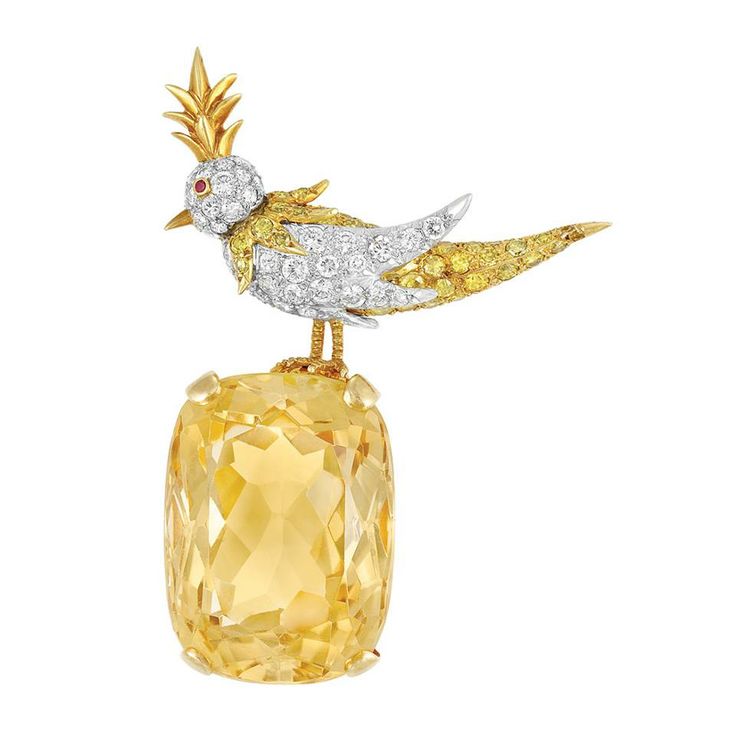
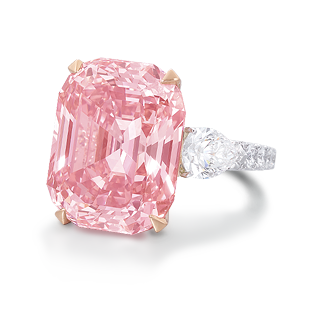
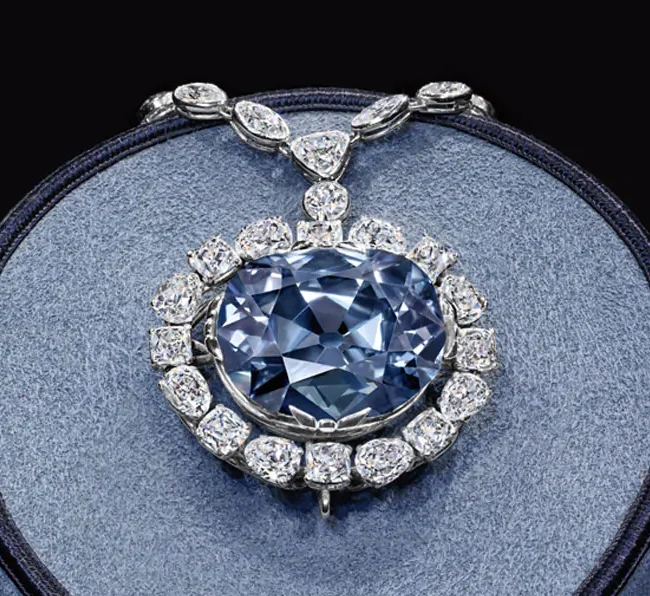

The Famous Tiffany Yellow Diamond
The Famous Graff Pink Diamond
The Famous “Hope” Blue Diamond
The Famous “Pumpkin” Diamond
Yellow diamonds are most notably mined in South Africa. This very famous yellow bird diamond was discovered in South Africa in 1877 and was a year later acquired by Charles Lewis Tiffany. The rough cut weighed 287.42 carats and was polished into the ornate jewelry you see today. In most yellow diamonds, nitrogen atoms group themselves in very specific ways, which will absorb light in the blue region of the color spectrum, producing yellow colors.
The vast majority of the world’s pink diamonds are found in the Argyle Mine in Western Australia. This 24.78 carat pink diamond was once owned by the famed Harry Winston. These diamonds get their color when heat and pressure deep within the earth cause the crystal lattice to distort, which absorbs green light and imparts a pink color.
The most common origin of blue diamonds in the Cullinan mine and the Golconda region. This 45 carat “Hope” diamond was auctioned in 2008 for $24 million USD. The vast majority of blue diamonds get their color from elements of boron bonding to carbon, which absorbs red, yellow, and green parts of the spectrum producing a blue hue.
The vast majority of orange diamonds, although very rare, originate in Africa. The 5.54 carat vivid “Pumpkin” diamond, the largest at the time, got its name for being purchased at auction on Halloween Eve 1997. Similar to yellow diamond formation, nitrogen atoms arrange themselves in specific ways and absorb light in the blue and yellow regions of the spectrum, imparting an orange color.
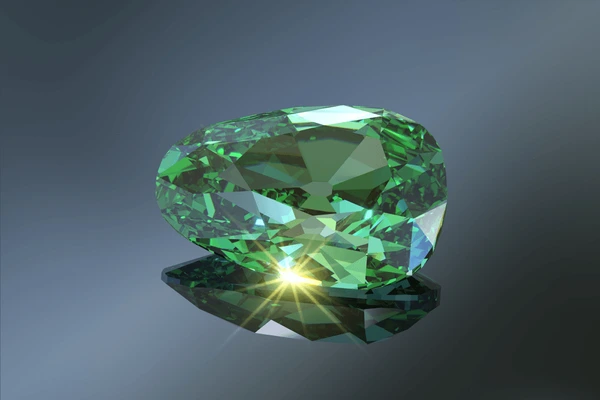
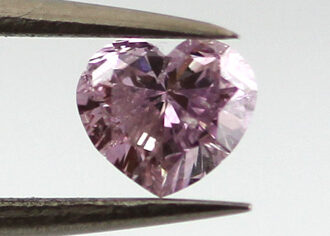
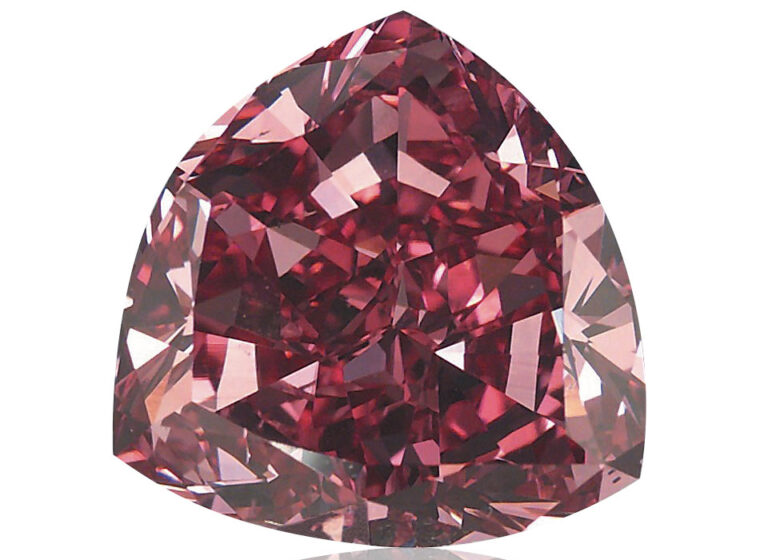
The Dresden Green
The Royal Purple Heart
The Famous Moussaieff Red
Most green diamonds originate in regions of Africa and South America. This Dresden Green is the most famous of green diamonds, weighing approximately 41 carats. Unique among natural color diamonds, green diamonds acquire their color after their trip to the earth’s surface when they rest in the ground near naturally occurring radiation. The radiation pushes into the diamonds, which causes absorption in the red and yellow regions of the spectrum, producing green hues.
Purple diamonds are among the “most rare” and have most recently been found in Northern Canada and and Russia. This Royal Purple Heart Diamond is the largest vivid purple diamond on record, weighing an impressive 7.34 carats. Similar to pink diamond formation, purple diamonds get their color when heat and pressure deep within the earth cause the crystal lattice to distort, causing absorption of green and yellow light, which imparts a purple hue.
Considered the most rare of all diamond colors, fancy red diamonds have been found mostly in the Arygle Mine in Western Australia and sometimes in Brazil. The Famous Moussaieff Red triangular diamond weighs only 5.11 carats, further explaining the rarity of red diamonds. Similar to pink and purple diamond formation, red diamonds are also formed by distortions in the crystal lattice, however, red diamonds have a lower tone and high saturation, which creates the deep red color.
Although natural white diamonds have a large investment property depending on its qualities, natural fancy color diamonds appreciate in value far greater than any white diamond ever could. Historically, fancy color diamonds gave provided an annual average return between 14-20% per year, typically yielding a higher return than other investments. The 14-20% is an average based on a 20-year calculated history, given that the first 20 years will bring single-digit returns, and afterwards, exponentially grow.
